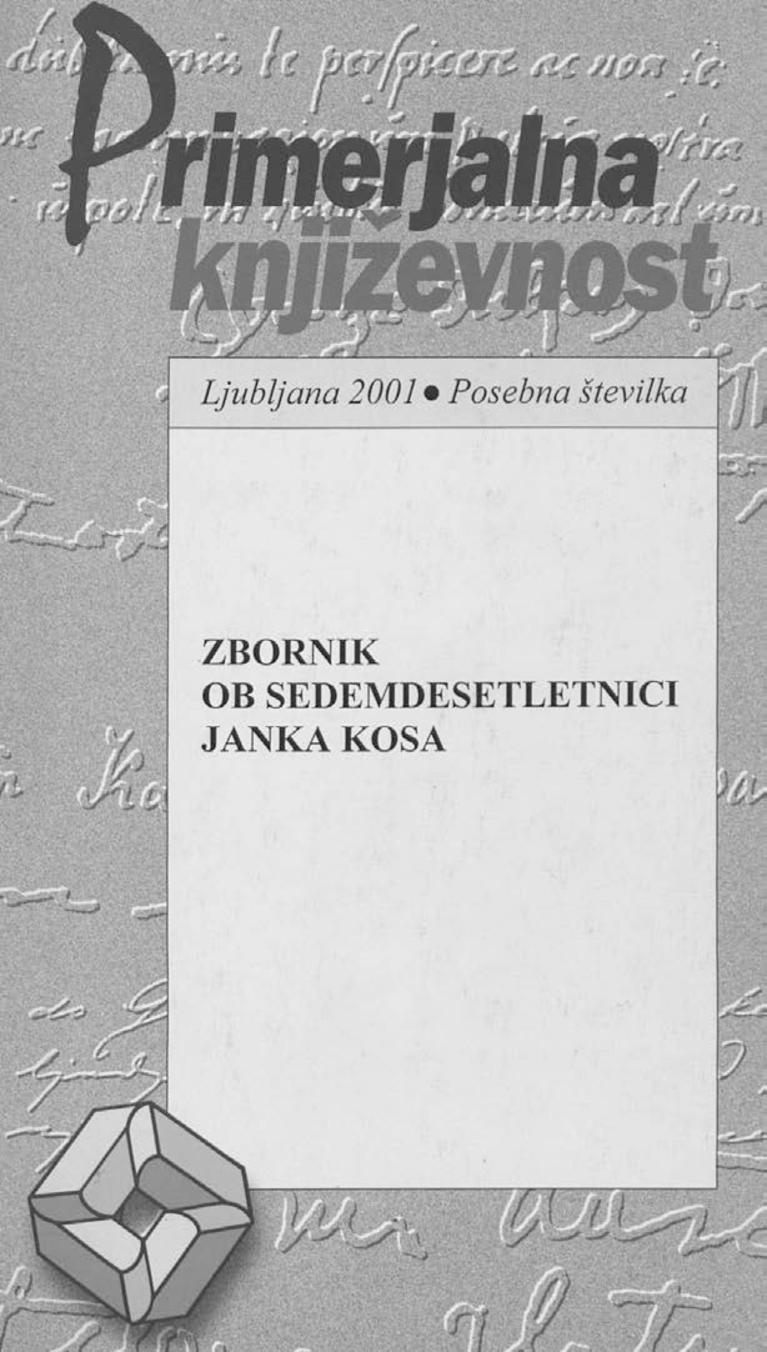Simon Jenko and the Structure of Symbolic Content
Abstract
In the Slovenian literature of the 19th century, it was the poetry of Simon Jenko (1835–1869) which implemented most consistently the post-romantic geistesgeschichtlich (intellectual) and literary-aesthetic platform of this literary tendency. This is also achieved through Jenko’s symbolization, primarily in his reflective, but also in his love poems of the poem/image form, which were also written by Jenko’s most powerful literary influence, Heine. The poem/image form apparently corresponds to post-romantic literary tendencies, as well as to the method of symbolization; that is, giving meaning to concrete imagery without comment, through suggesting an idea or emotion of the poem’s theme. The reason for this, according to Janko Kos, is that a poem/image depicts the subject’s internal state as something already passive, static, and observed from a distance. The lyrical subject, concealed behind the image of the poem and, therefore, not present in the action of the poem, transforms him/herself into a seemingly objective observer, who, in the image, in terms of narrative and description, presents an event, situation, object or occurrence in external reality. The theme suggested by such imagery, however, still refers to an idea or emotion: it suggests a psychological disposition of the concealed lyrical subject, who contemplates, in the image, him/herself and his or her emotional state, without actively intervening in the situation; the subject is a feeble, weakened post-romantic subject, although still founded in his or her substantiality, and, therefore, only appears indirectly, through an idea or emotion that gives meaning to the concrete imagery, suggesting the subject’s psychological disposition. In Jenko’s poetry, the imagery, the elements of empirical nature, are set in reflective correspondence to the lyrical subject as a principal, precisely in the introductory poem to the “Obrazi” series of poems; this principle is then employed in six poems in the series (cca. one third of the series) and in three other poems, which were not included by the author in his collection Pesmi (Poems). Not every poem/image version of the texts mentioned above allows symbolization; only those depicting a situation or character without a rationalizing interpretation as to what they mean to the concealed lyrical subject. This symbolizing version is mainly free of dialogue, but it allows a monologue assuming a persona. In comparison to the classic-romantic poetry of Prešeren (1800–1849), who developed symbolism only in his extensive cycle of the “Wreath of Sonnets”, Jenko’s post-romantic poetry took a step further in this development: it elaborated symbolism in a brief, fragment-like poem/image.References
BERNIK, France: Lirika Simona Jenka. Ljubljana: Slovenska matica, 1962 (Razprave in eseji, 1).
JENKO, Simon: Zbrano delo I (Pesmi 1865 / Nezbrane lirske pesmi). Uredil in opombe napisal France Bernik. Ljubljana: DZS, 1964.
KOS, Janko: Primerjalna zgodovina slovenske literature. Ljubljana: Znanstveni inštitut Filozofske fakultete, Partizanska knjiga, 1987.
PATERNU, Boris: »Problem romantike v slovenski poeziji.« V: M. Kmecl (ur.): IX. seminar slovenskega jezika, literature in kulture. Zbornik predavanj. Ljubljana: Filozofska fakulteta, Oddelek za slovanske jezike in književnosti, 1973, str. 119–126.
PATERNU, Boris: »Jenkovo mesto v razvoju slovenske poezije.« Slavistična revija 27/1979, št. 3–4, str. 325–332.
PATERNU, Boris: Obdobja in slogi v slovenski književnosti. Ljubljana: Mladinska knjiga, 1989.
SKAZA, Aleksander: »Jenko–Lermontov–Gogolj in problem pozne romantike.« Slavistična revija 27/1979, št. 3–4, str. 393–401.


